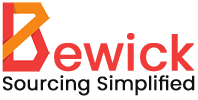Analyzing and Controlling the Costs of Your Production Process
Effective cost management is crucial for businesses to maintain profitability and stay competitive in the market. Analyzing and controlling the costs of your production process is essential to identify areas of improvement, optimize resources , and make informed decisions. In this article, we will discuss the importance of manufacturing cost management, its components, and best practices to achieve cost efficiency.

What Are Manufacturing Costs?
Manufacturing costs are the costs associated with creating a finished product. These costs can be divided into three major categories: direct materials, direct labor, and manufacturing overhead.
- Direct Materials: The costs of raw materials that will go into the product.
- Direct Labor: The staffing costs for paying those who directly produce or supervise production on the factory floor.
- Manufacturing Overhead: The indirect costs associated with supporting production, including everything from indirect labor costs in the back office to equipment depreciation.
Types of Production Costs
Production costs can be classified into two categories: fixed costs and variable costs.
- Fixed Costs: These costs remain steady even if the production volume changes. Examples include equipment costs, salaries, and rent.
- Variable Costs: These costs increase or decrease as production volume changes. Examples include utility expenses, raw materials, and labor costs.
Importance of Manufacturing Cost Management
Manufacturing cost management is essential for businesses to make informed decisions about pricing, production timing, and volume. Effective cost management can help organizations:
- Identify wasteful practices and maximize the use of raw materials.
- More actively manage vendor relationships and stabilize the cost of raw materials over time.
- Minimize over- or underproduction.
- Avoid storage costs for raw material and finished inventory.
- Appropriately hire and schedule workers based on production demands.
- Make pricing and quote decisions based on data rather than gut feelings.
- Maintain quality and customer satisfaction while lowering costs.
Manufacturing Cost Management Best Practices
Here are 17 best practices that manufacturers can use to gain better insight and control over their manufacturing costs:
- Implement Lean Manufacturing: Lean manufacturing provides guiding principles for reducing waste and increasing efficiency in manufacturing processes.
- Embrace Total Quality Management (TQM): TQM emphasizes continual improvement and quality discipline to increase customer satisfaction and reduce costs.
- Use Data Analytics: Analyze data to identify areas of improvement, track costs, and make informed decisions.
- Implement Process Costing: Track costs of specific processes during one or more stages of manufacturing.
- Use Target Costing: Start with a targeted sales price of a product and work backward to determine costs.
- Implement Activity-Based Costing: Aggregate costs across a production run based on the activities that go into that run.
- Manage Vendor Relationships: Actively manage vendor relationships to stabilize the cost of raw materials over time.
- Optimize Inventory Management: Implement just-in-time inventory and production management to reduce waste and minimize storage costs.
- Improve Workforce Management: Hire and schedule workers based on production demands to minimize labor costs.
- Reduce Waste: Identify and eliminate wasteful practices to maximize the use of raw materials.
- Implement Energy Efficiency: Reduce energy consumption to minimize utility expenses.
- Use Supply Chain Management: Manage supply chain operations to reduce costs and improve efficiency.
- Implement Quality Control: Implement quality control measures to reduce defects and minimize waste.
- Use Cost Accounting: Track and analyze costs to make informed decisions.
- Implement Process Standardization: Standardize processes to reduce variability and improve efficiency.
- Use Benchmarking: Compare costs and processes with industry benchmarks to identify areas of improvement.
- Continuously Monitor and Improve: Continuously monitor and improve manufacturing processes to reduce costs and improve efficiency.
By implementing these best practices, businesses can effectively analyze and control the costs of their production process, leading to increased profitability and competitiveness in the market.
